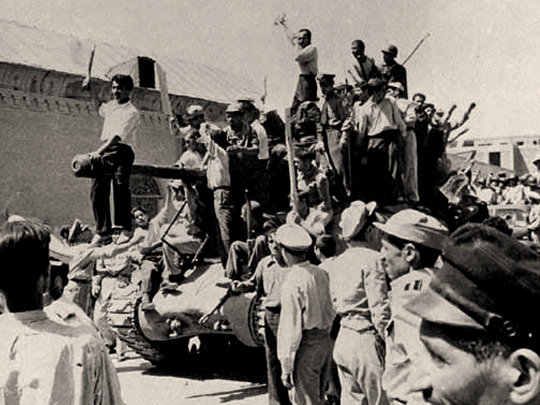Wikimedia Commons / CC-BY-SA-3.0 / GFDL
1 – Prime Minister of Iran is Overthrown in a Coup Orchestrated by the UK and USA
The 1953 Iranian coup d’état, known in Iran as the 28 Mordad coup, was the overthrow of Prime Minister Mohammad Mosaddegh to strengthen the monarchical rule of Mohammad Reza Pahlavi on 19 August 1953.
It was orchestrated by the United Kingdom and the United States.
Mossadegh had sought to audit the documents of the Anglo-Iranian Oil Company, a British corporation (now part of BP) and to limit the company’s control over Iranian petroleum reserves.
Upon the refusal of the AIOC to co-operate with the Iranian government, the parliament voted to nationalize Iran’s oil industry and to expel foreign corporate representatives from the country.
After this vote, Britain instigated a worldwide boycott of Iranian oil to pressure Iran economically. Winston Churchill and the Eisenhower administration decided to overthrow Iran’s government.
Classified documents show that British intelligence officials played a pivotal role in initiating and planning the coup and that the AIOC contributed $25,000 towards the expense of bribing officials.
In August 2013, 60 years after, the American CIA admitted that it was in charge of both the planning and the execution of the coup, including the bribing of Iranian politicians, security, and army high-ranking officials.
Mosaddegh was arrested and convicted of treason by the Shah’s military court.
On 21 December 1953, he was sentenced to three years in jail, and placed under house arrest for the remainder of his life.
Other Mosaddegh supporters were imprisoned, and several received the death penalty. The Shah ruled as monarch for the next 26 years, until he was overthrown in 1979.
2 – Edmund Hillary and Tenzing Norgay are First to Reach the Summit of Mount Everest
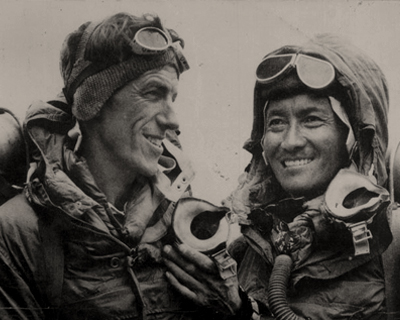
The 1953 British Mount Everest expedition was the ninth mountaineering expedition to attempt the first ascent of Mount Everest.
It is the first confirmed to have succeeded when New Zealander Edmund Hillary and Nepalese Sherpa Tenzing Norgay reached the summit on Friday, 29 May 1953.
Led by Colonel John Hunt, it was organized and financed by the Joint Himalayan Committee.
News of the expedition’s success reached London in time to be released on the morning of Queen Elizabeth II’s coronation, 2 June.
When they returned to Kathmandu, the expedition learned that Hillary had already been given a Knighthood of the British Empire and Hunt a Knight Bachelor for their efforts.
The Government of Nepal received the members of the expedition, where the senior queen of the country presented Tenzing with a purse of ten thousand rupees, which was then about £500.
3 – Hugh Hefner Publishes First Edition of Playboy Magazine
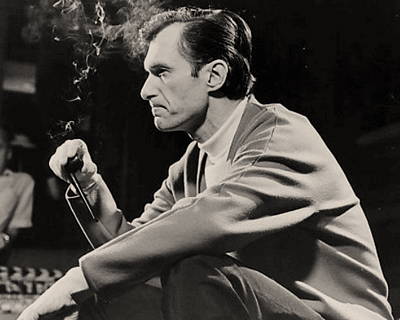
In the spring of 1953, Hugh Hefner, a psychology graduate who had worked in Chicago for Esquire magazine, had planned out the elements of his own magazine, that he would call Stag Party.
Hefner raised just over $8,000, including from his brother and mother.
However, the publisher of an unrelated men’s adventure magazine, Stag, contacted Hefner and informed him it would file suit to protect their trademark if he were to launch his magazine with that name.
Hefner, his wife Millie, and his friend, Eldon Sellers, met to discuss alternative names before Sellers suggested “Playboy”.
The first issue, in December 1953, was undated, as Hefner was unsure there would be a second. He produced it in his kitchen.
The first centerfold was Marilyn Monroe, although the picture used originally was taken for a calendar rather than for Playboy. Hefner chose what he deemed the sexiest image, a previously unused nude study of Marilyn.
The heavy promotion centered around Marilyn’s nudity on the already-famous calendar, together with the teasers in marketing, made the new Playboy magazine a success.
The first issue sold out in weeks, selling over 50,000 copies, at a cover price of 50¢. Copies of the first issue in mint to near mint condition sold for over $5,000 in 2002.
4 – Francis Crick and James Watson Discover Structure of DNA-Molecule
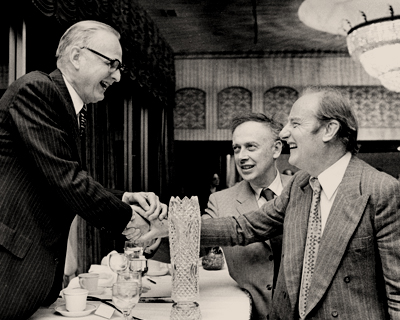
The first article published to describe the discovery of the double-helix structure of DNA, using X-ray diffraction and the mathematics of a helix transform, was the ‘Molecular Structure of Nucleic Acids: A Structure for Deoxyribose Nucleic Acid’.
It was published by Francis Crick and James D. Watson on 25 April 1953, in the scientific journal Nature, on pages 737–738 of its 171st volume.
This article is often termed a “pearl” of science because it is brief and contains the answer to a fundamental mystery about living organisms.
This mystery was the question of how it is possible that genetic instructions are held inside organisms and how they are passed from generation to generation.
The article presents a simple and elegant solution, which surprised many biologists at the time who believed that DNA transmission was going to be more difficult to deduce and understand.
The discovery had a major impact on biology, particularly in the field of genetics, enabling later researchers to understand the genetic code.
5 – East Berliners Uprising Against Communist Rule Quelled by Soviet Tanks
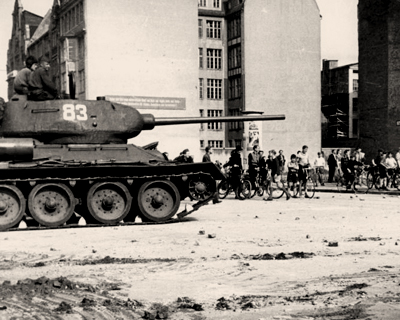
The Uprising of 1953 in East Germany started with a strike by East Berlin construction workers on 16 June 1953.
It turned into a widespread uprising against the German Democratic Republic government the next day.
In remembrance of it, 17 June became a national holiday of West Germany, prevailing until reunification.
The uprising in East Berlin was violently suppressed by the tanks of Soviet Forces in Germany and the Volkspolizei.
In spite of the intervention of Soviet troops, the wave of strikes and protests was not easily brought under control.
After 17 June, there were still demonstrations in over 500 towns and villages.
